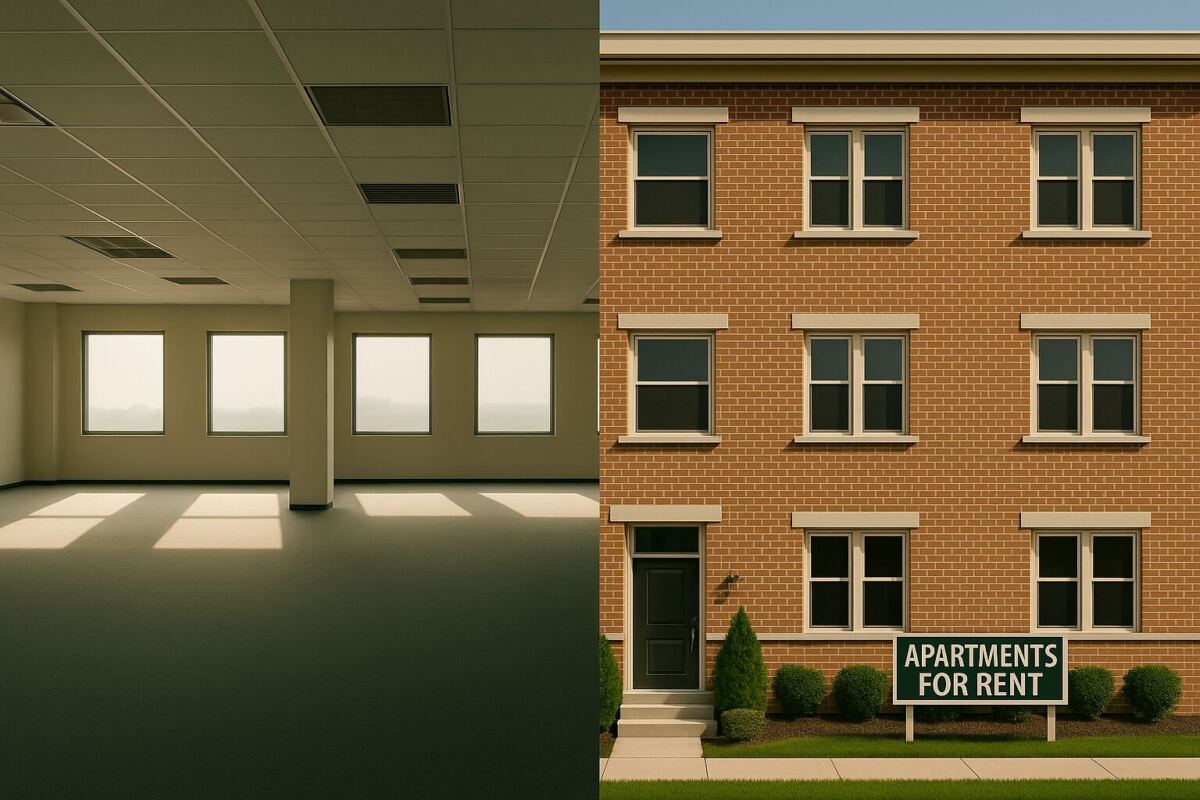In cities across the country, families are straining under the cost of housing. Americans now spend an average of 42% of their income just to keep a roof over their heads, and more than one in three parents worry their children won’t be able to afford to live in the communities where they were raised. Currently, the U.S. is short 7.1 million affordable and available rentals, a gap that has long fueled anxiety about rising costs and limited supply.
For decades, the “Not In My Backyard” or NIMBY, mindset was treated as a given: people endorsed the idea of affordable housing but balked when it came to projects on their block. But a new national survey of 1,000 U.S. adults, commissioned by Built (a software platform used across real estate and construction finance) and conducted by Talker Research, suggests that perception is badly outdated.
According to the survey results, an overwhelming 83% of Americans now say they support affordable housing in their own neighborhoods, signaling a dramatic shift in public sentiment. Surprisingly, that consensus crosses political lines — 92% of Democrats, 83% of Independents, and 74% of Republicans say they would welcome affordable housing in their own neighborhoods. In today’s polarized climate, such alignment is rare, a pattern echoed by other national polling that shows strong bipartisan appetite for solutions that expand housing supply and stabilize costs.
Policies Moving, and Where the Money Meets the Models
At the federal level, lawmakers are weighing a series of proposals aimed at making it easier to finance and build homes.
The Community Investment & Prosperity Act (S.2464) would give banks more flexibility to invest in public-welfare projects, including affordable housing and community development, loosening a longstanding cap that has kept private capital on the sidelines. The ROAD to Housing Act of 2025 (S.2651) is a sweeping package designed to improve coordination among HUD, USDA, and the VA while streamlining programs and strengthening reporting requirements, all with the goal of reducing the friction that slows funding from reaching real projects. Meanwhile, the Housing Affordability Act (S.1527) would update FHA multifamily loan limits, a technical adjustment with outsized consequences for underwriting and financing mid-scale developments.
Together, these proposals underscore a recognition in Washington that solving the housing shortage requires not just political will, but structural changes to the financing system that turns dollars into actual units. States and cities are also moving, often focusing on converting unused buildings and easing zoning to unlock supply.
NYC: A Mayor’s Race Defined by Housing and a New Zoning Regime
The stakes are perhaps most visible in New York City, where housing has become the defining issue of the 2025 mayoral race. The city is already moving, implementing the “City of Yes for Housing Opportunity” zoning overhaul, projected to enable more than 82,000 new homes over the next 15 years by loosening restrictions and allowing more office-to-residential conversions. That kind of policy directly aligns with the survey’s findings, which showed strong public backing for converting surplus buildings and requiring affordable units in new developments.
On the campaign trail, candidates are offering sharply different solutions to the same pressures surfaced in the national poll. Zohran Mamdani, the Democratic nominee, has proposed building 200,000 permanently affordable rent-stabilized units and expanding public housing, while Mayor Eric Adams, running as an independent, is pushing to expand “City of Yes” reforms and has pledged to reserve more affordable units for veterans and city workers. The details differ, but the common denominator is urgency: New Yorkers expect more housing supply, and fast.
The Surprise in the Numbers, and What It Signals
What the survey makes clear is that resistance to new housing is no longer the immovable object. Large majorities say they would accept affordable housing nearby, many are open to living next to it, and most support policies that would add supply, including conversions, inclusionary requirements, and tax incentives for neighborhoods that build. That runs counter to the stereotype that Americans back affordability in principle but oppose it on their block.
Pair those attitudes with the structural deficit of 7.1 million affordable and available rentals, and the business case becomes clearer: the demand is there, and, crucially, the social license appears to be catching up. The constraint is now how quickly capital and permitting can move, and whether the financing stack can pencil amid higher rates and rising hard costs.
That’s where the survey’s commissioner enters the picture. Built, known in banking, private credit, and development circles for digitizing draws, budgets, inspections, and portfolio analytics, sits at the infrastructure layer where dollars flow from lenders and investors into active construction. The firm’s interest in public sentiment isn’t academic: when policymakers unlock funding and localities open the door to more units, the speed at which money becomes materials depends on the workflows connecting underwriters, inspectors, contractors, and owners.
A Window for Action
The emerging alignment — public openness, bipartisan appetite for policy fixes, and local zoning reforms — creates an unusually clear window to close America’s housing gap. In New York, the mayoral contest will test how far a big city can push production, conversion, and preservation at once. In Washington, lawmakers will decide whether to modernize the financing machinery behind affordable housing and middle-market multifamily.
For households facing the next rent hike, none of this is abstract. The headline from this summer’s polling is genuinely new: when it comes to adding affordable homes, Americans are saying “yes,” even on their own block. The question is whether money, rules, and capacity can now say yes just as fast.

